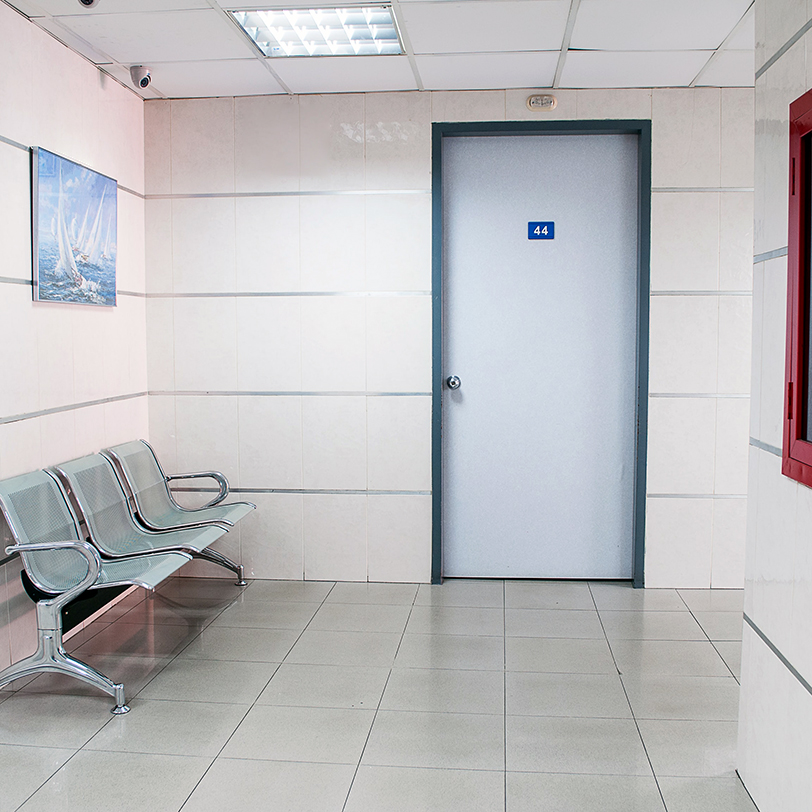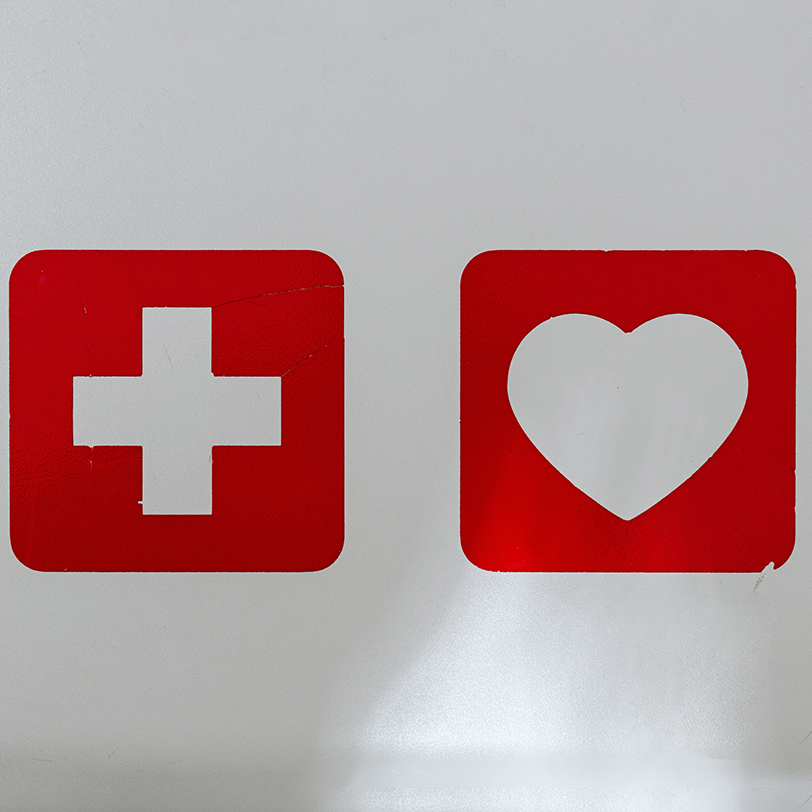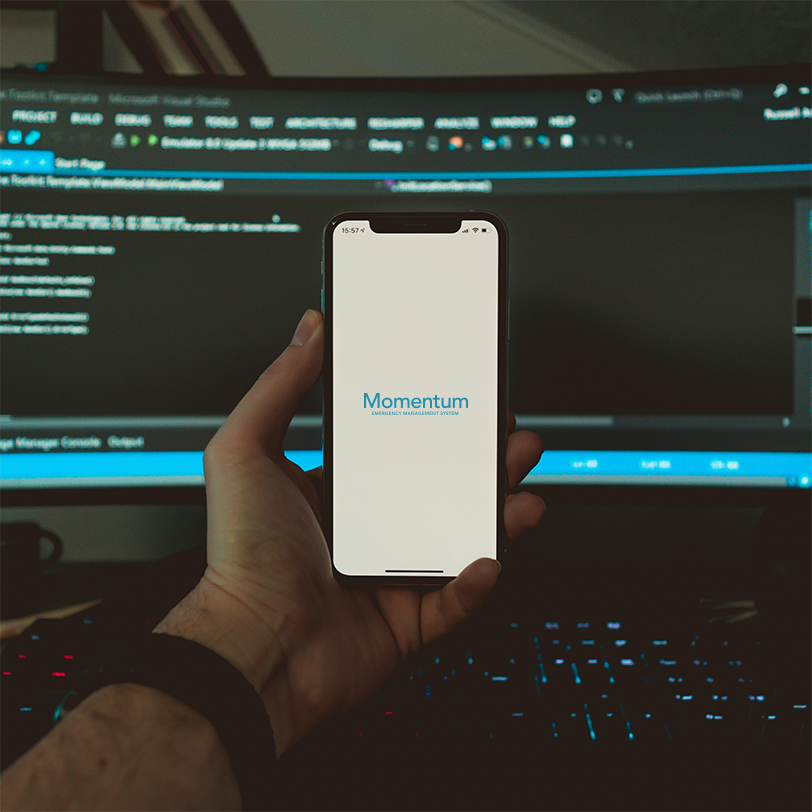Conference call: 7 good reasons to use these within your organization
What are your reasons for organising a meeting with your staff? Prevent a critical event and better coordinate the response? Collaborate and communicate with the team for a specific job? Facilitate understanding and learning about a specific task? Shorten distances and reduce costs for company travel?
One of the most important requirements for a successful company is effective communication. The lack of adequate communication in an organization hinders productivity and gives rise to various problems. Indeed, the appropriate measure and nature of the interaction between employers, staff and customers constitute the backbone of any business.
Call conferences are such a simple and inexpensive tool that they offer a multitude of benefits to optimize business productivity. Connect multiple people simultaneously, allowing them to communicate beyond geographical barriers and time constraints while saving valuable time and expense. Moreover, it does not compromise the efficiency of a meeting, it does not require a lot of basic knowledge of the world of computer science and can be installed in a short time.
What are the reasons for an organization to implement a conference call system?
In order to better understand how important, it is for a company to have a conference call system, we have identified 7 reasons why you should implement it and not do without it anymore.
1. The conference call system is reliable and very secure
There is no risk that your valuable or sensitive data will fall into the wrong hands because a conference call tool ensures absolute call security. All content remains confidential if you choose the right provider and evaluate its security features.
2. Facilitates response and coordination during an emergency
One of the biggest advantages of using a conference call system is that during an emergency it reduces the response time needed to assemble a team when time is critical. Our company has always implemented conference call systems for hospitals and companies that need to coordinate intervention teams to respond effectively to an emergency or a critical event that could threaten business continuity or the health of citizens.
3. Improve collaboration between departments and increase individual productivity
With the continued spread of Coronavirus cases and the tightening of prevention measures introduced by various national governments, companies are favoring remote work in order not to lose productivity. For these companies, the conference call is of paramount importance because it improves collaboration between people, increases individual productivity and exponentially reduces distances.
4. Minimizes misunderstanding
How much time do we waste having meetings on our meetings because during the first one we didn’t receive clarification or solutions? The conference call ensures effective communication and information sharing in real time and reduces misunderstandings.
5. It helps you reach more people at the same time
A conference call service can reserve up to 50 participants for a small business and up to 3000 people worldwide for an executive conference. This means that all staff and clients can be brought together in one call.
6. The conference call is extremely convenient
It saves valuable time that is lost in travel as it can be conducted from almost anywhere; be it your office or even your home. Participants can call from landlines, mobile phones or public phones. It is also versatile, which means that it can be organized according to your company’s needs without being as demanding as a real face-to-face meeting. Remote employees can easily collaborate and actively interact with their team.
7. Frequent and effective communication
Conference calls do not require your presence in the office. If a meeting is late, you can continue your work until everyone joins the conference.
If you have not yet implemented the conference call as a means of communication, your company is missing out on the countless advantages it can offer you.
DOS Group, with Momentum’s ecosystem, helps companies, public organizations and healthcare facilities implement conference call systems that help coordinate intervention teams to respond quickly to an emergency situation, improve the effectiveness of corporate communication, increase productivity of each individual team, and reduce unnecessary travel costs.
The Canton of Basel Stadt and positive effects of using Momentum : a year later

DATE
December 5, 2019
TAGS
Last year the First Responder System based on the alert of lay rescuers through the Momentum App’s has been implemented in the Canton of Basel Stadt, and analyzing the results obtained we can affirm that it has been a success!
Starting on 18 October 2018, the Department of Health, assisted by the Department of Justice and Security of the Canton of Basel, gave the green light to the creation of a network of volunteer rescuers trained to intervene in the event of an emergency notification concerning a cardiac arrest. The formation of this network stems from the desire to follow the successful models implemented in other cantons in Switzerland, such as the Canton of Ticino, where the Ticino Cuore Foundation has succeeded in training more than 4,000 people, representing the equivalent of 1% of the total population.
The adoption of Momentum’s software had a double objective:
- to implement a rescue chain, composed of lay rescuers, capable of reaching a victim of cardiac arrest before the arrival of specialist.
- to improve the chances of survival of victims throughout the region.
In this first year of foundation, the Canton has focused its effort on the formation of rescuers. But what jumps right out at you is the extraordinary enthusiasm by the local community who has decided to support the project signed up for the courses en masse. More than 1.000 have been the voluntary rescuer trained to intervene in case of cardiac arrest. This strong interest comes as the canton’s awareness-raising campaigns, but above all by the growth of social responsibility of the local community. Indeed, more are the people that choose to offer their time with a unique goal identifiable in helping someone in need.
The First Responders, since the first day of activity, have been used for 57 cases of emergencies concerning cardiac arrests or so-called ones. In 21 cases the victims have been reached in due time and successfully reanimate. The high number of victims rescued means that the short term survival rate has already enhanced from a lower 10 % (registered before the implementation of Momentum) to 40 % in just a year!
Extraordinary data who have allowed at the Canton to pursue our goal every day:
MAKE SWITZERLAND A SMARTER PLACE AND CARDIAC-EMERGENCY PROOF!
Can food-riders improve the chain of survival to rescue cardiac arrest victims?

DATE
November 22, 2019
TAGS
From a study published in the Resuscitation Journal by a group of doctors at the San Raffaele Hospital in Milan, a provocation has been launched (which we want to make our own): can food-riders improve the rescue chain to rescue the victims of OHCA?
Every year in Switzerland alone, more than 8,000 people die from heart failure. One of the major causes is the failure of rescue services to arrive in good time, since, on average, ambulances take more than 10 minutes to reach the place of intervention. Too long a period if shorter response times are associated with increased survival and improved neurological results. In this regard, it is enough to think that with every minute that passes, the chances of survival decrease by 10%.
Food-riders as First Responders
T. Squizzato, G. Landoni and A. Forti of the Department of Anesthesia and Intensive Care of S. Raffaele in Milan talk about this opportunity in the Resuscitation Journal. In an article titled “Food-riders may improve the chain of survival in out-of-hospital cardiac arrests by delivering CPR and AEDs”, the three have focused, once again, on the potential role of smartphones and mobile applications (such as Momentum) in sending lay rescuers for cardiac arrest emergencies. But they have launched an idea: the possibility of including food-riders among Lay First Responders.
According to the group the apps based on the geo-localization, activated by the emergency medical services’ emergency response center (144), on the localization and on the OHCA site sending of lay First Responders trained at CPR, play an important role. Especially the geo-localization function because it is used to calculate the distance between the location of the event and the last position of the rescuer. On average, Lay First Responders located at a maximum of 1 km from the place of intervention, receive a push-notification inviting them to accept to take part in the mission or refuse if unable to do so. All with one goal: to have a chain of volunteer rescuers ready to intervene to save a life.
But how can raiders, who satisfy our gluttony sins every day, help to improve survival rates?
The possibility of training citizens who work every day on the streets of our city to the CPR procedures could have positive effects. As the study group has also argued, training food-riders to provide first aid and, therefore, to sending them notifications of any recorded interventions near the places where they are geo-located, could improve the rescue chain. And why not, it might be even more useful to provide them with small portable defibrillators that can be carried in their backpacks or bikes. All with one result: increasing the survival chances of the victims.
The advantages considered are knowledge of city streets ranging from small tunnels to pedestrian areas, and the ability to move faster, especially at rush hour.
At this point we can as: why not train the riders to provide first aid in case of cardiac arrest?
The Momentum team by always helped the networks of First Responders in Switzerland to have an impeccable tool.
Thanks also to our system, the cantons have been able to improve the survival rate for victims affected by OHCA to a level never before reached in Switzerland. Just to mention a few: in the Canton of Ticino (a unique), there is a survival rate of more than 50%, while in the Canton of Basel with the adoption of Momentum there has been an increase from 10 to 40 percent in a single year.
Data that make us proud of the work done so far and that push us more and more to achieve a goal: make Switzerland the country with the highest survival rate in Europe!
Momentum app to save lives in Tessin

DATE
July 25, 2019
TAGS
In the newspaper of Wednesday, July 24, 2019, Corriere del Ticino published an article that highlights Momentum App to save lives and for the management of emergencies for victims affected by out-of-hospital cardiac arrest in Tessin.
In May 2014, DOS Group SA and the Ticino Cuore Foundation decided to create Momentum, the first app in Switzerland designed to improve the management of alarms from out-of-hospital cardiac arrest. The goal of the development of this APP is to reduce the waiting time of the victim and save more lives. To do this, the Foundation decided to set up a network of first responders, ready to help victims of cardiac arrest outside the hospital. The network is made up of people who, on a voluntary basis, decide to make their experience, skills and, above all, their free time available to help victims of cardiac arrest. To date, the Foundation has almost 4,000 volunteers out of a total of 365,000 inhabitants throughout the region, more than 1% of the population.
How does Momentum app to save lives in Tessin?
With the introduction of Momentum, the alarm of cardiac arrest comes delivered directly to the smartphones of the rescuers, through notification push and holding account of the position of the rescuers. At this point, First Responders will be free to decide whether to accept or reject the request for intervention. In the event that the rescuer accepts the intervention, he is identified and geolocated to know the real chances of success of the intervention and arrival at the emergency site before the arrival of the ambulance. If he refuses, he is not identified and geolocated, and no information about the intervention is notified.
Benefits of using Momentum in Tessin
To date, 365 cases of out-of-hospital cardiac arrest have been recorded in Ticino, an average of 1 per day.
In the table above we have brought back some advantages deriving from the use of Momentum in Ticino.
Let’s go over them again:
- The medium time in order to start an RCP for the First Responders alerted with the app Momentum is of 3,5 minutes; with the old system SMS it takes 5,6 minutes.
- The first alert rescuers from the Momentum app reach the victim in an average time of 4,5 minutes. While ambulances reach the victim in less than 10 minutes.
- In the 4 years without Momentum (2010-2013), the rate of survival of the patients discharged alive from the hospital is of approximately 37%. With the adoption of Momentum, in the four successive years (2014-2017), the rate of survival attests to 46% and would have to reach 50% in the successive years.
With the successes achieved in Ticino, we understood how important it is to help a victim in time. For this reason, we are working every day with our cantonal partners to offer a service that guarantees the same standards of success that we have achieved in our territory and that makes us proud of the work we do.
Why we are proud to help save lives with our APP
Would you like to adopt Momentum in your own canton?
Would you like to try our demo for Momentum for First Responders?
Contact us at momentum@dos-group.com for a free consultation and look at how many cantons already use Momentum.
Cardiac Arrest: women have less chance of survival than men

DATE
June 11, 2019
TAGS
[01:58] Carola Melillo
According to a study conducted by the University of Amsterdam, which confirms a report conducted the previous year by a pool of American researchers, Women who have suffered cardiac arrest outside the hospital receive relief less quickly than men and have less chance of survival.
Is it possible that women who are the victims of out-of-hospital cardiac arrest have less chance of being rescued by passers-by and, consequently, less chance of survival than men? According to a study published in the European Heart Journal by a group of Dutch researchers, it would appear that, all things being equal, humans are more likely to receive support from passers-by and are more likely to survive.
Analysis
The researchers conducted the analysis using data on more than 5.700 people affected by extra-hospital cardiac arrest in the Netherlands. During the study phases, they realized that, although all had received health care from local rescue teams, only 68% of women received help, compared to 73% of men. Survival, once they reach the hospital is also lower for women with 37%, compared to 55% for men. Furthermore, although both genders received medical assistance, only 12.5% of women survive compared to around 20% of men.
The probable causes
What are the reasons that generate this difference?
The authors have tried to draw up a series of hypotheses that could be the cause of delays in rescue and the reduction of the probability of survival for women.
- First, they found that women victims of cardiac arrest were more likely to suffer from conditions associated with a lower shockable rhythm, such as diabetes 2 or stroke.
- A second non-negligible factor is the delay with which passers-by and the victims themselves recognized the warning signs of a cardiac arrest. In this regard, just think that if for the woman the first symptoms of a heart attack are fatigue, nausea, and pain, for the man it is the stabbing pain in the chest.
- The last aspect to be reckoned with is the high percentage of widowed and lonely women who do not receive relief due to their situation. Furthermore, those surrounding the victim may have inhibitions on performing a cardiac massage on a woman.
In the next article we will analyze the difference between women and men in Ticino and the possibilities of survival, even if the use of Momentum has made a region a model to follow, is to national level that international
The silent effects of using a F.R. network to cardiac arrest cases

DATE
May 22, 2019
TAGS
A few weeks ago, the Ticino Cuore Foundation published on the Resuscitation Journal a report on the survival rate of patients suffering from cardiac arrest from 2005 to 2009, launching a provocation aimed at everyone: it will be possible to resume 50% of those affected by cardiac arrest in Ticino?
Analysis
Using a statistical table, they have tried to analyze the cardiac arrests that occurred in Ticino between 2005 and 2009, considering as variables:
- The number of cardiac arrests per patient
- The number of patients considered for resuscitation
- The number of patients assisted
- The number of patients who received a CPR massage
- The number of patients with ventricular fibrillation / ventricular tachycardia
- The number of patients with ROSC (return of spontaneous circulation)
- The number of patients leaving the hospital
After collecting the data it was necessary to represent the progress on an annual basis, through a regression graph, where on the X axis the years in which the survey was conducted are reported, while on the Y axis the percentage of patients leaving the hospital.
Results
From the analysis of the data and the regression graph designed, it is clear that it would be statistically possible to reach the challenge launched by the Foundation, that is to say, to have 50% of the patients leaving the hospital after suffering a cardiac arrest outside a hospital . But to achieve this goal, a cultural change will be needed, increasing the number of people eligible for cardiac massage. Ticino, to date, is a unicum for Switzerland and a model to follow throughout Europe. In fact, thanks to the network of First Responder and the Momentum App, the rescue teams, on average, manage to reach the place of intervention in 3.5 minutes.
The Momentum team is proud to be able to contribute to achieving this goal thanks to the app we developed with our partner and to be able to contribute every day to save more and more lives.
Do you want to become a First Responder too?
Download the Momentum App and take part in the AED-DAE courses of the Ticino Cuore Foundation.
A predictive model saves more lives

DATE
April 8, 2019
TAGS
Among the collaboration between the Ticino Cuore Foundation, the Cardiocentroticino and the University of Zurich, an analysis was conducted on the heterogeneity of cardiac arrest cases that occurred outside the hospital (OHCA, Out of Hospital Cardiac Arrest) and which proposes the creation of a predictive model useful for preventing and reducing OHCAs in Ticino.
Main goals
Previous studies have indicated the existence of a cluster of subjects who have suffered an out-of-hospital cardiac arrest, both at national and state level. But, to date, a cluster of subjects at the municipal level had not been created. For this reason, the objectives of the report are to:
- determine and analyze whether the incidence of cardiac arrests outside the hospital is evenly distributed throughout the Ticino Canton area;
- evaluate and estimate the areas of greatest risk of cardiac arrests that occurred outside the hospital and whether this depends on the demographic characteristics of the resident population;
- create a predictive model to predict cardiac arrests outside the hospital at the municipal level;
To conduct this analysis, the study team collected data on all cardiac arrests that occurred OHCA between January 2005 and December 2017, and then recorded and geo-localized them in a prospective way. Subsequently, the demographic characteristics (gender and age distribution) were collected at the individual municipality level by the Federal Statistical Office. The count and incidence were calculated at the level of each municipality, taking into account the gender and age distribution. Finally, a “validation group” was generated to try to estimate the percentage of future cardiac arrests in the Ticino area.
What they did
Out of a total of 2129 cardiac arrests occurring outside a hospital, 117 are those registered in the municipalities of the Canton Ticino. Of these, 70% occurred at home where 68% of cases were male and with an average age of 71 years. The team also highlighted that there is a concentration of events in the southern part of Ticino, with a distribution of events between the Ticino valleys. Furthermore, the largest number of cases was found in the most populated urban areas, although there are some less populated municipalities, but with a greater presence of male people with an average age of over 80 years.
What could be done
The test performed on the validation group made it possible to validate the predictive model, to such a point that was possible to demonstrate how, taking into account the territorial distribution of gender and age, up to 90% of the variability of events can be predicted.
A revolutionary approach which, together with the continuous preventive measures proposed by the Ticino Cuore Foundation and the network of First Responders using Momentum, would help Ticino to be the first region to be able to prevent cardiac arrests outside the hospital.
Momentum App: the application for emergency management system

DATE
12 March, 2019
TAGS
The Ticino Cuore Foundation, together with its partners, has published in Medical Journal Resuscitation a report that compares the average time to reach the emergency by the First Responder via SMS (Short Message Service) or using an alert system based on a mobile application, the Momentum App.
The Case Study
The Ticino Register of Cardiac Arrests collects all data on extra-hospital cardiac arrests (OHCA) occurring in the Canton of Ticino. During the period in which the analysis was conducted, 593 extra-hospital cardiac arrests occurred in Ticino. Thus, in 198 cases the notification to the First Responder network was sent via SMS; in 134 cases the notification to First Responders was sent via push notification via mobile APP. Another important data that has been reported during the survey is the average time that the First Responder/Lay Responder needs to arrive on the scene. Using the Momentum App, the average time in order to reach the place has been meaningfully reduced to 3,5 minutes, while if compared with the system based on SMS, they needed 5,6 minutes in order to reach it
Momentum improves EMS
In Ticino, thanks to the Ticino Cuore Foundation, out of a population of over 353,000 people, 1% are members of the First Responder network of the Ticino Cuore Foundation. A number of people who actively contribute to significantly increase the percentage of First Responders who arrive first on the scene (70% vs 15%) and that helps the Canton of Ticino to have a higher survival rate.
Would you like to join the First Responder network in Ticino?
Download the Momentum App for Android or iOS and join the First Responder network.
